Has the Women’s WorldTour outgrown the teams that race it?
Strade Bianche is the first race of 2022 Women’s WorldTour, but this year the top level of women’s racing has more days than ever. We ask if the WorldTour is too big
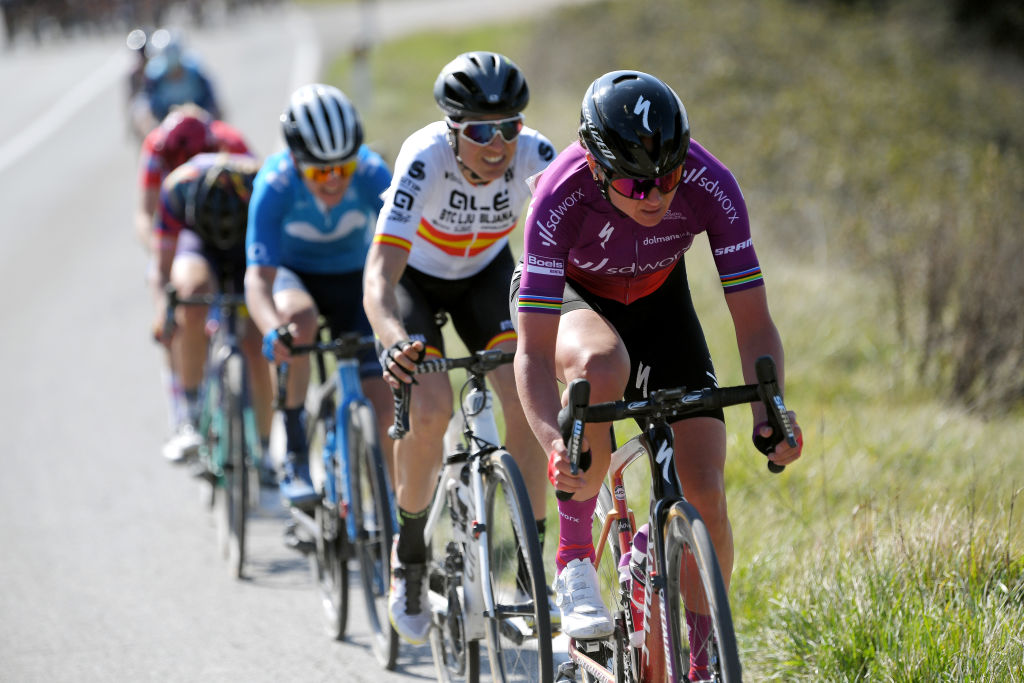
This weekend Strade Bianche kicks off the Women’s WorldTour. Though only the eighth edition of the women’s event, it has become one of the season’s most eagerly anticipated races, with a place in cycling fans’ hearts.
A heady mixture of beautiful, rolling Tuscan countryside, steep punchy climbs, white gravel and fervent tifosi combine with an eager peloton to create what is consistently one of the most consuming days on the calendar.
From the freezing slush of 2018 to the broiling heat of the displaced 2020 race, Strade Bianche always delivers.
The women’s Strade Bianche will forever be associated with the Women’s WorldTour. The day after the first edition in 2015, just along one of Siena’s narrow streets from Piazza del Campo where Megan Guarnier had raised her arms in victory, stakeholders met in Palazzo Ugurgieri to discuss the future of the women’s sport.
Among the proposals they confirmed was the creation of the Women’s WorldTour. The new top-level would replace the World Cup - which that year consisted of 10 one day races - with a mix of four stage races and 13 one dayers.
So much has changed in the women’s sport since that meeting in Siena. Live TV coverage is the rule rather than a rare exception, and the introduction of WorldTour teams, also decided at the Siena meeting, has brought truly professional teams.
There are more races, Paris-Roubaix and the Tour de France to name two, and the WorldTour has grown from 35 days in that first year to a maximum of 52 in 2018. If the UCI’s calendar is to be believed, this year there will be 71 days. Including 57 days of stage racing.
Get The Leadout Newsletter
The latest race content, interviews, features, reviews and expert buying guides, direct to your inbox!
But one thing that has not evolved significantly are the numbers of riders on the teams. SD Worx have been the WorldTour’s top-ranked team in all but one season. As Boels-Dolmans in 2016 they had 12 riders, this year they have 14, though Amy Pieters is unlikely to ride, the Dutch champion in a coma after a crash late last year.
Of all the WorldTeams UAE Team ADQ and Canyon-SRAM have most riders with 15. So are there too many top-tier race days?
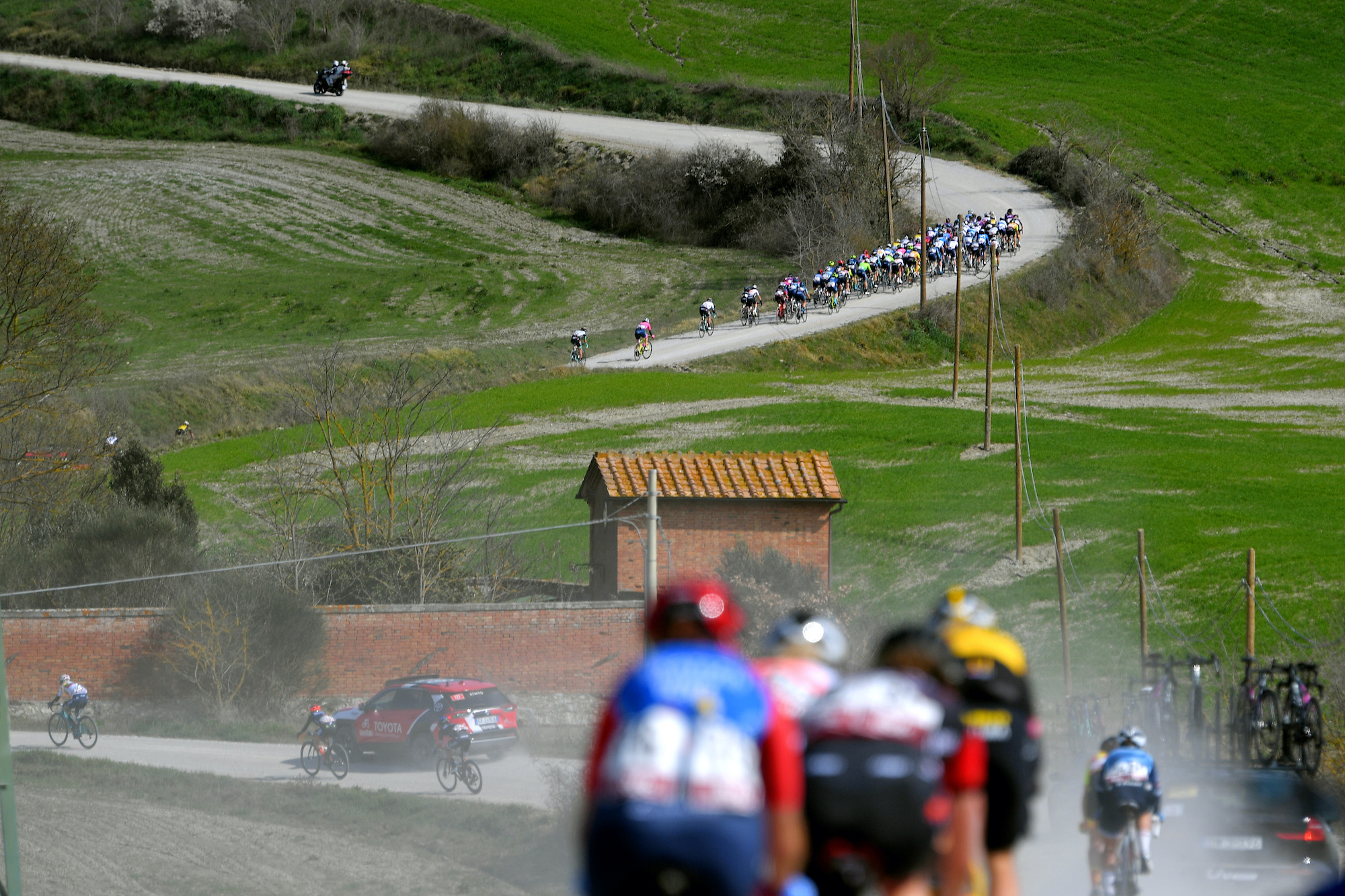
Riders race at the 2021 Strade Bianche
“We are not men’s WorldTour teams with 30 riders, we have a maximum of 16,” explains Ronny Lauke, team principle at Canyon-SRAM. “No team has that, and therefore it’s a challenge, but I like challenges.
“It’s good to see that there’s growth in the sport, but July and August is quite demanding, so you are forced to have a big roster with some 14-16 riders to fulfil the demands of racing and share out the riders. You need a big team.”
And bigger teams need bigger budgets.
‘It’s really good because we have development, but next season I have 31 employees on my team,” Stephen Delcourt, manager at FDJ-Nouvelle Aquitaine Futuroscope tells us. “And when we travel the organisation pay only €3000, but the cost of going to one race the minimum is €8-9000. It’s really hard for the budget, if you have no more than €2,000,000 it’s not possible.”
The two longest and most coveted races of the year, the Giro Donne and Tour de France Femmes together comprise 18 days and take place entirely with the 31 days of July, causing planning issues, especially as the former race’s route is yet to be announced. Then the six-day Battle of the North begins nine days after the Tour. With two one dayers in between.
“I think it’s possible to be good on the Giro and the Tour de France or good for the Tour de France and the Norway, but not all three,” Delcourt continues. “For many years women’s cycling is saying ‘ah it’s so shit, we have no big races,’ now we have 10 days [Giro] and 8 days [Tour] and the Arctic race [Battle of the North.]”
In pre-Covid years the WorldTour was done and dusted before the World Championships in mid-September, but this year there are two stage races in October, one in Switzerland, the other in China, where there is also a one day race. Combine that with the expected return of the Cadel Evans race to the top tier in 2023 and not only are there more race days and travel, but off-seasons become shorter than ever.
“My team is going to be 11 riders so everyone’s going to be really pushed,” said former British champion Hannah Barnes (Uno-X), who pointed out how some teams were forced to withdraw from last October’s Ronde van Drenthe due to lack of fit riders.
“It’s challenging, it’s down to teams not pushing riders and staff too hard. But for years and years we’ve been asking for more days, more races and TV time, and WorldTour events mean that. We’re going to have to support that and with the right team and the right support I think you can stay healthy for the whole year.”
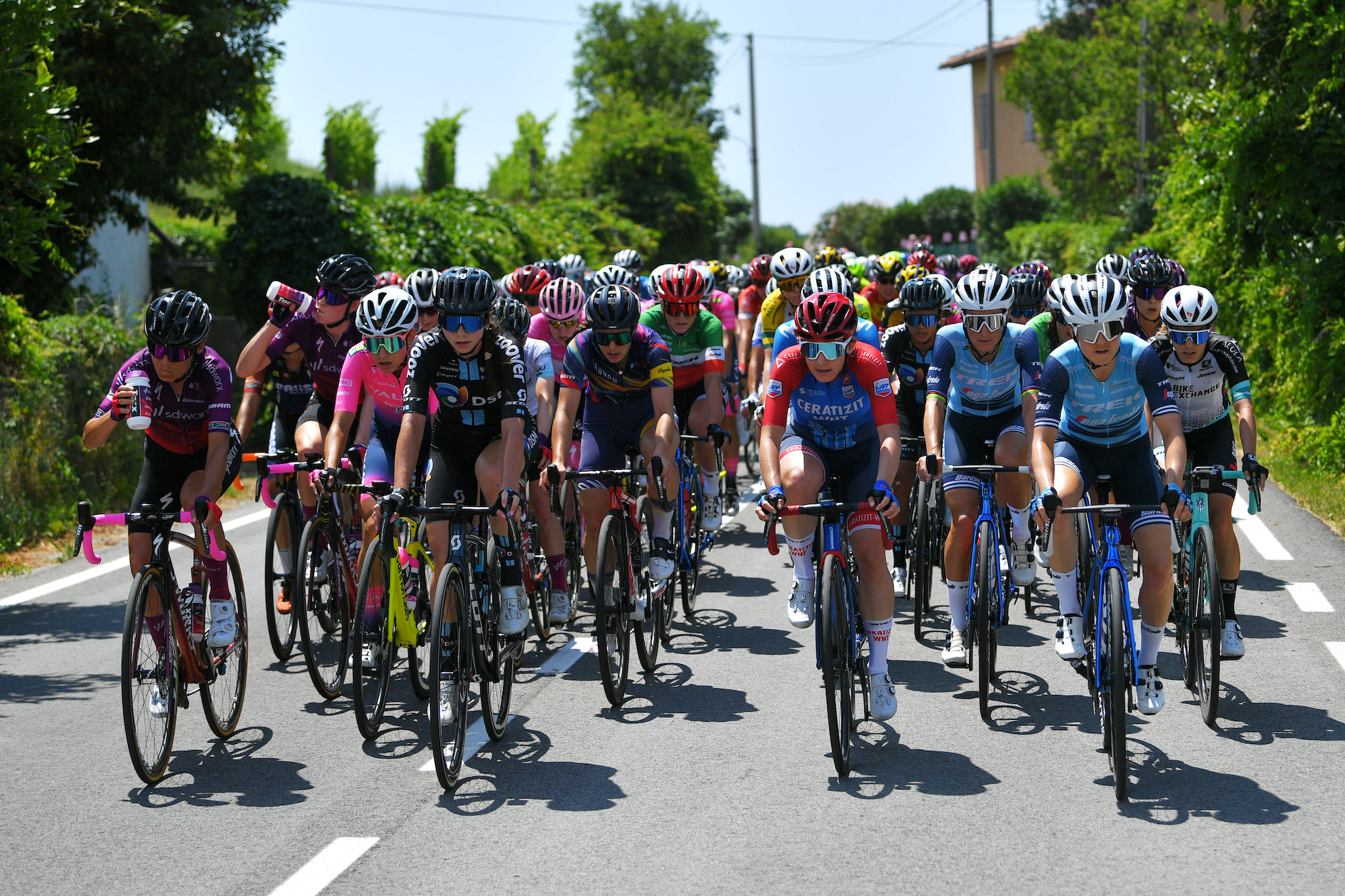
The proximity of the Giro and the Tour means a stretch for the small women's squads
More races mean in recent seasons we have seen race organisers set a wider variety of routes which, in turn, have created opportunities for a greater selection of riders. This a good thing and the WorldTour’s expansion means this will continue, making for even more interesting events.
“Things are changing right now because people are getting more specialised,” says Elisa Longo Borghini (Trek-Segafredo), one of the peloton’s best climbers and most attacking riders. “I think in the future we will see different riders targeting different races.
“You can’t race every single race otherwise you will be over-raced, you can’t be good all the time, it’s just impossible. It’s a good thing there are many races, but teams need to follow up because you can do a double programme, but there will be other factors and team budgets need to grow to create a better structure.”
Between May 13 when Itzulia Women begins in the Basque Country and September 11 when the Ceratizit Challenge finishes somewhere else in Spain (the route is yet to be announced) only once is there more than two weeks between stage races, with 54 WorldTour race days in 121 days.
This not only puts pressure on teams and riders, but also on lower-level races, who rely on big names attendance for continued sponsorship and without those teams the sport’s foundations are at risk.
Much of the change the women’s sport has undergone in recent years has been driven by the UCI. It is the world governing body that created the WorldTour and mandated TV coverage. WorldTour teams have at last brought a minimum wage and even maternity leave. For that they should be credited.
On balance there are not too many WorldTour race days, however, the women’s sport is on the crest of a wave that must not be allowed to break. The UCI must support the entire sport and to do that they need to walk the fine line between ensuring continued progress and pushing too hard and causing the sport to collapse on itself.

Thank you for reading 20 articles this month* Join now for unlimited access
Enjoy your first month for just £1 / $1 / €1
*Read 5 free articles per month without a subscription

Join now for unlimited access
Try first month for just £1 / $1 / €1
Owen Rogers is an experienced journalist, covering professional cycling and specialising in women's road racing. He has followed races such as the Women's Tour and Giro d'Italia Donne, live-tweeting from Women's WorldTour events as well as providing race reports, interviews, analysis and news stories. He has also worked for race teams, to provide post race reports and communications.
-
 'This is the marriage venue, no?': how one rider ran the whole gamut of hallucinations in a single race
'This is the marriage venue, no?': how one rider ran the whole gamut of hallucinations in a single raceKabir Rachure's first RAAM was a crazy experience in more ways than one, he tells Cycling Weekly's Going Long podcast
By James Shrubsall
-
 Full Tour of Britain Women route announced, taking place from North Yorkshire to Glasgow
Full Tour of Britain Women route announced, taking place from North Yorkshire to GlasgowBritish Cycling's Women's WorldTour four-stage race will take place in northern England and Scotland
By Tom Thewlis
-
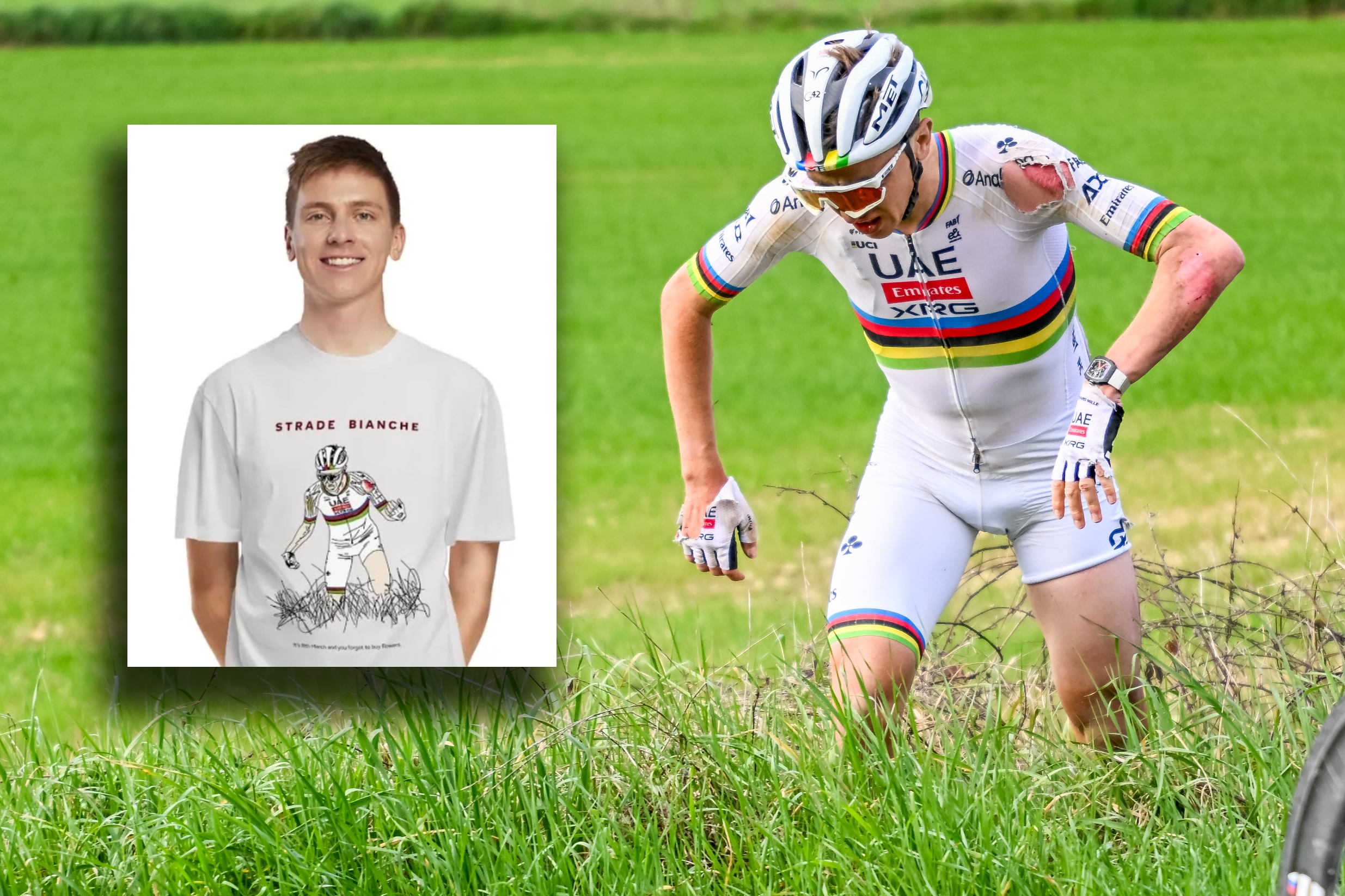 Tadej Pogačar commemorates Strade Bianche crash with limited edition t-shirt - here's how you can buy it
Tadej Pogačar commemorates Strade Bianche crash with limited edition t-shirt - here's how you can buy itPart of profits from new t-shirt will go to world champion's charity foundation
By Tom Davidson
-
 How to watch Tirreno-Adriatico 2025: Everything you need to live stream the Italian early-season stage race
How to watch Tirreno-Adriatico 2025: Everything you need to live stream the Italian early-season stage raceAll the key information on broadcasters and live streams for Tirreno-Adriatico on March 10 - 16, so you can watch the Italian stage race - one of the early season's best races.
By Tom Thewlis
-
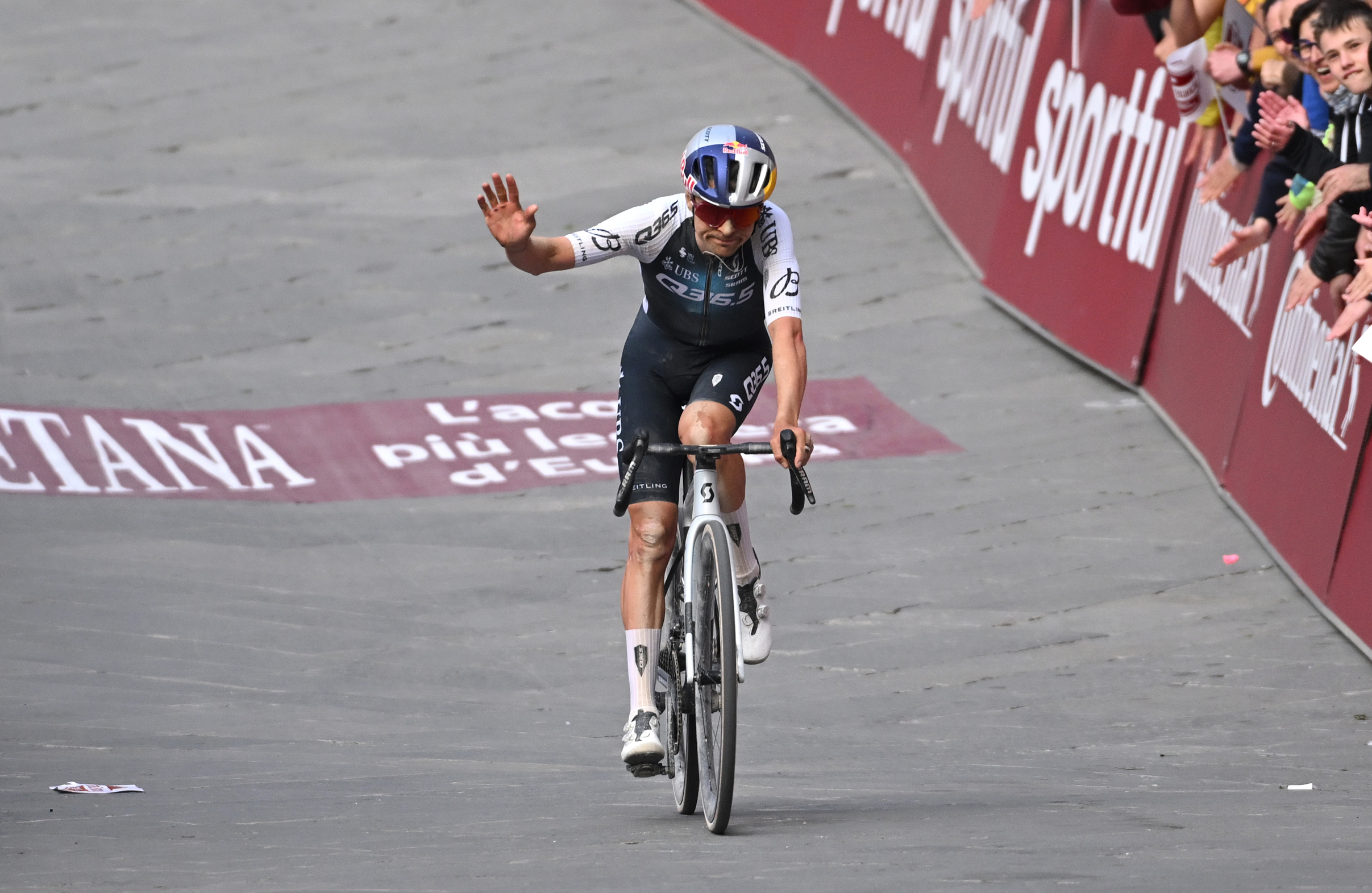 'I came pretty close' - Tom Pidcock left with mixed feelings after finishing second to Tadej Pogačar at Strade Bianche
'I came pretty close' - Tom Pidcock left with mixed feelings after finishing second to Tadej Pogačar at Strade BianchePidcock explains he didn’t want to ‘take advantage’ of world champion’s 'unfortunate' crash
By Tom Davidson
-
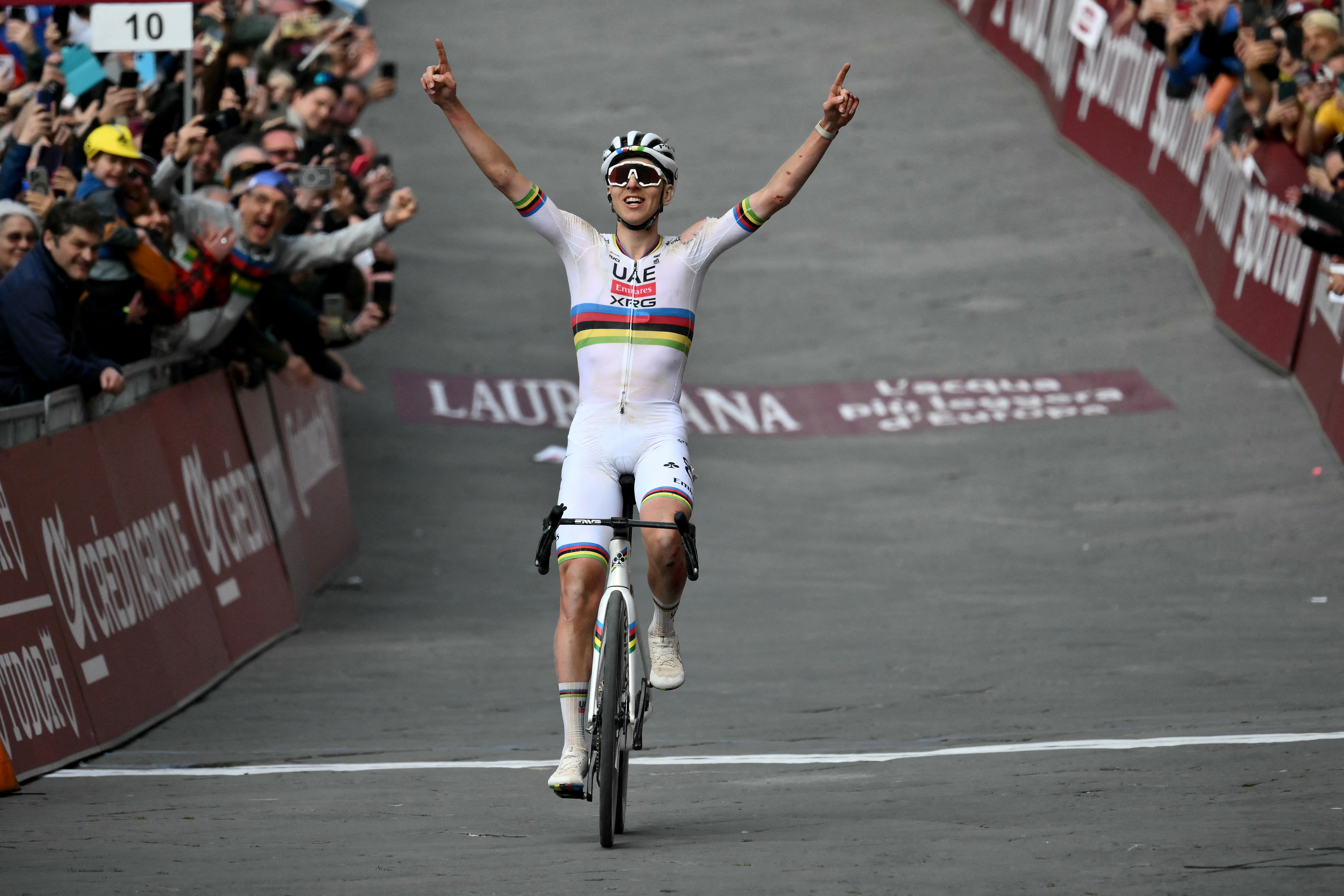 'Not the best way to win a race' - Tadej Pogačar comes back from dramatic crash to claim third Strade Bianche victory
'Not the best way to win a race' - Tadej Pogačar comes back from dramatic crash to claim third Strade Bianche victoryWorld champion in 'a lot of pain' after falling into a ditch
By Tom Davidson
-
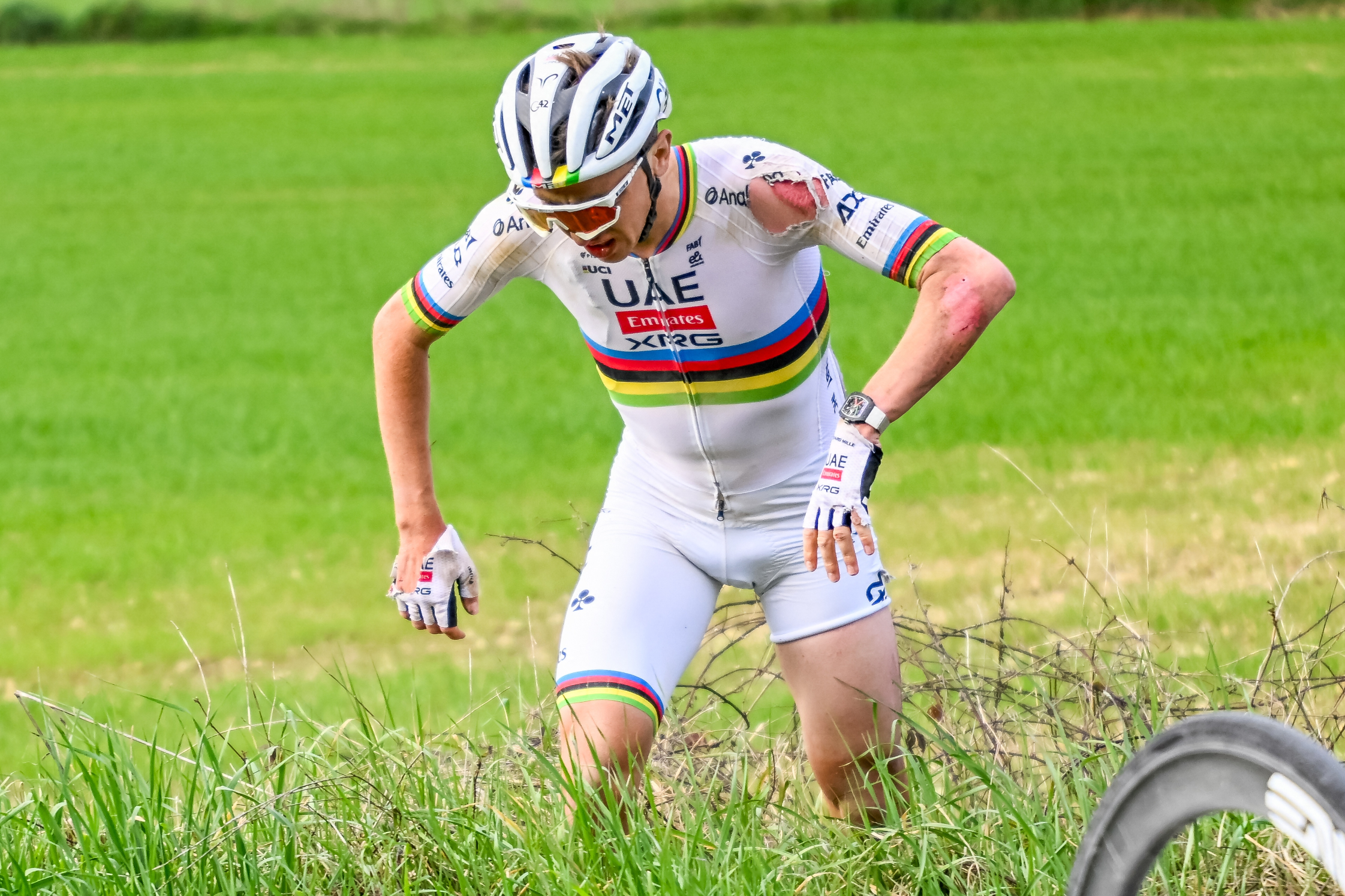 Tadej Pogačar crashes into ditch at Strade Bianche, remounts bike to continue
Tadej Pogačar crashes into ditch at Strade Bianche, remounts bike to continueWorld champion goes on to win race following rare crash
By Tom Davidson
-
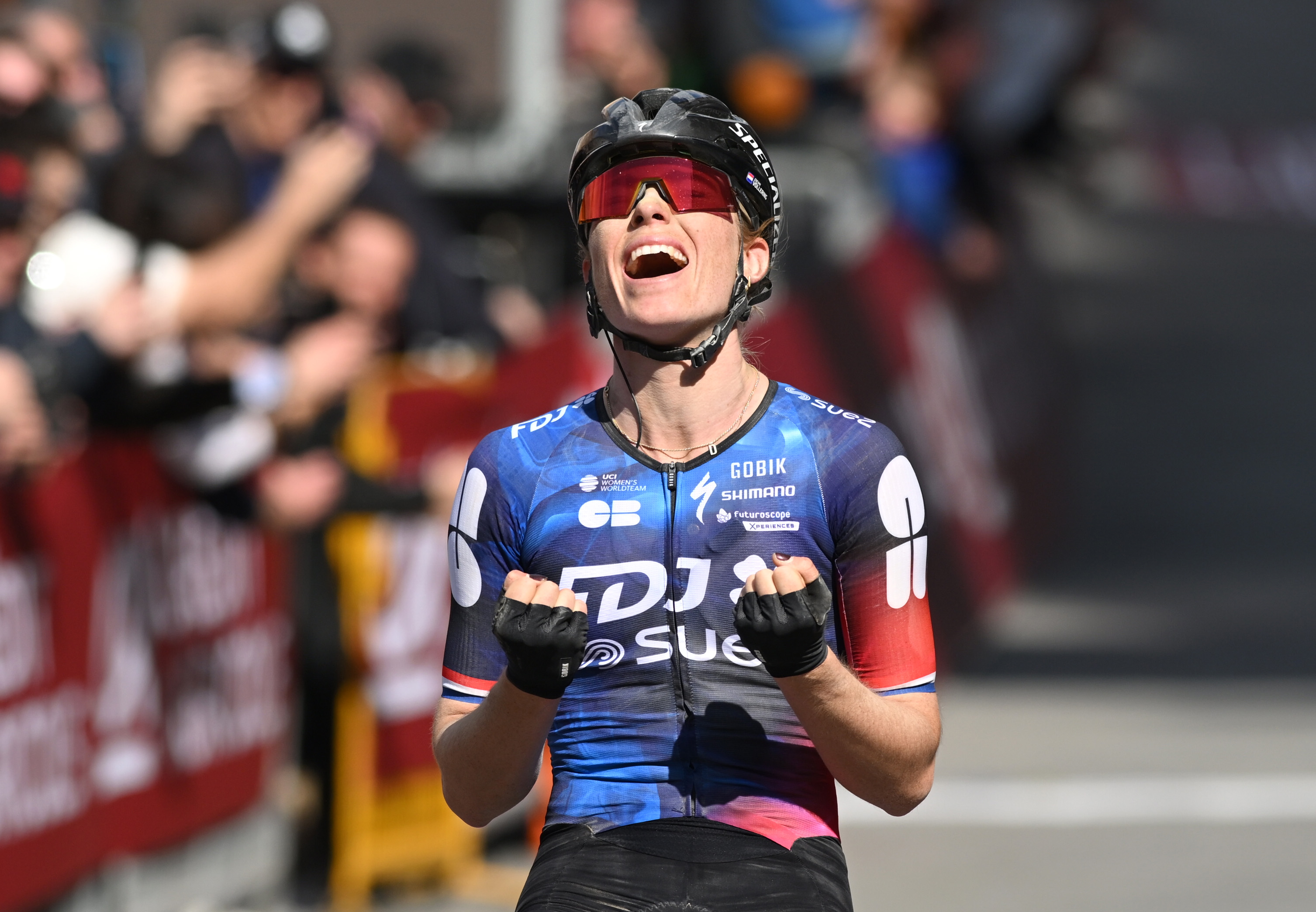 'We f****** did it' - Demi Vollering wins Strade Bianche battle against former coach Anna van der Breggen
'We f****** did it' - Demi Vollering wins Strade Bianche battle against former coach Anna van der BreggenFDJ-Suez rider claims victory with stinging uphill sprint
By Tom Davidson
-
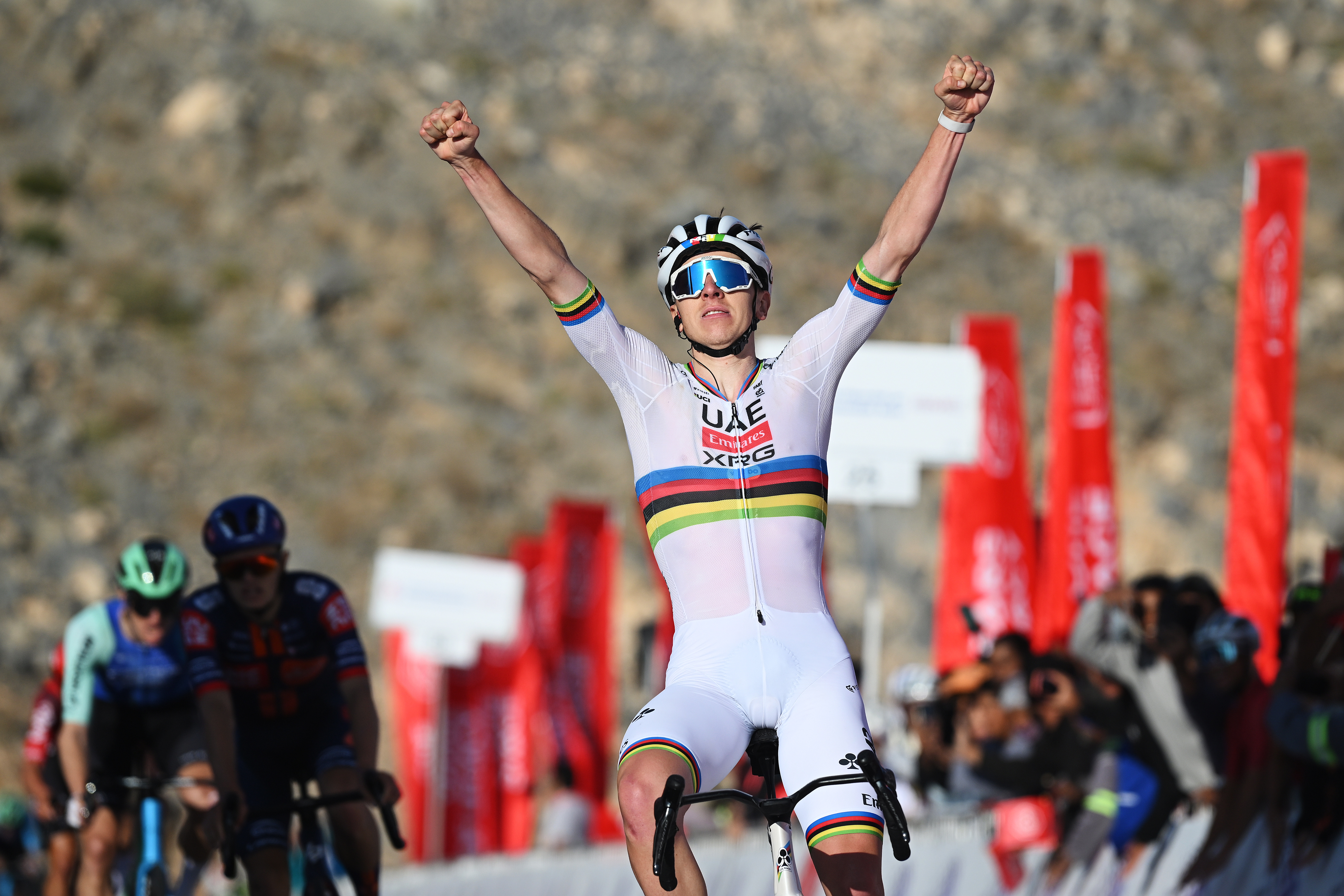 'There's nothing we can do' - Tadej Pogačar is 'almost impossible to beat', says Alberto Bettiol
'There's nothing we can do' - Tadej Pogačar is 'almost impossible to beat', says Alberto BettiolThe world champion is the overwhelming favourite to win Strade Bianche on Saturday
By Tom Davidson
-
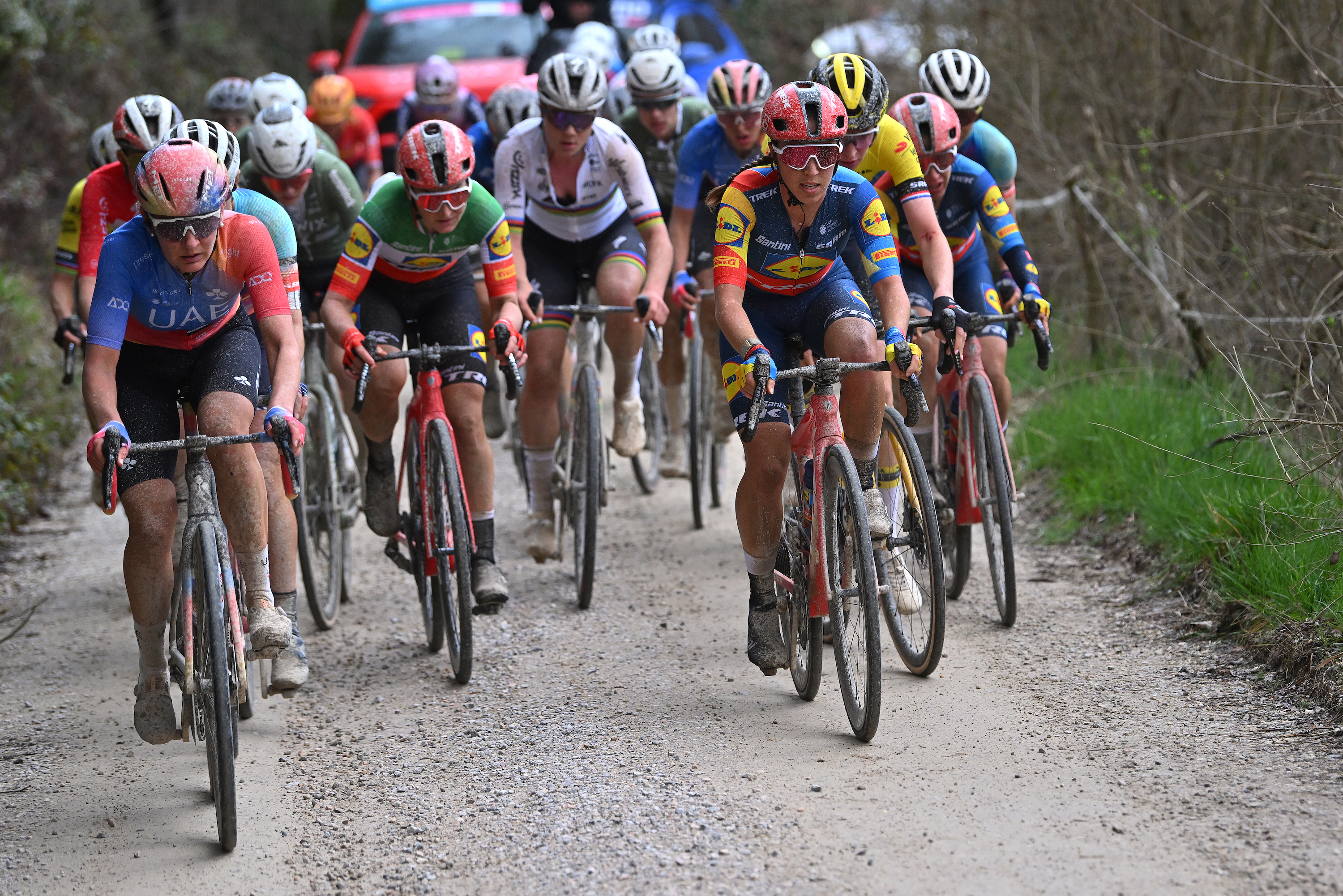 How to watch Strade Bianche 2025: Everything you need to live stream the Italian gravel Classic
How to watch Strade Bianche 2025: Everything you need to live stream the Italian gravel ClassicAll the key information on broadcasters and live streams for Strade Bianche on March 8, so you can watch the Italian Classic - one of the season's best races.
By Adam Becket